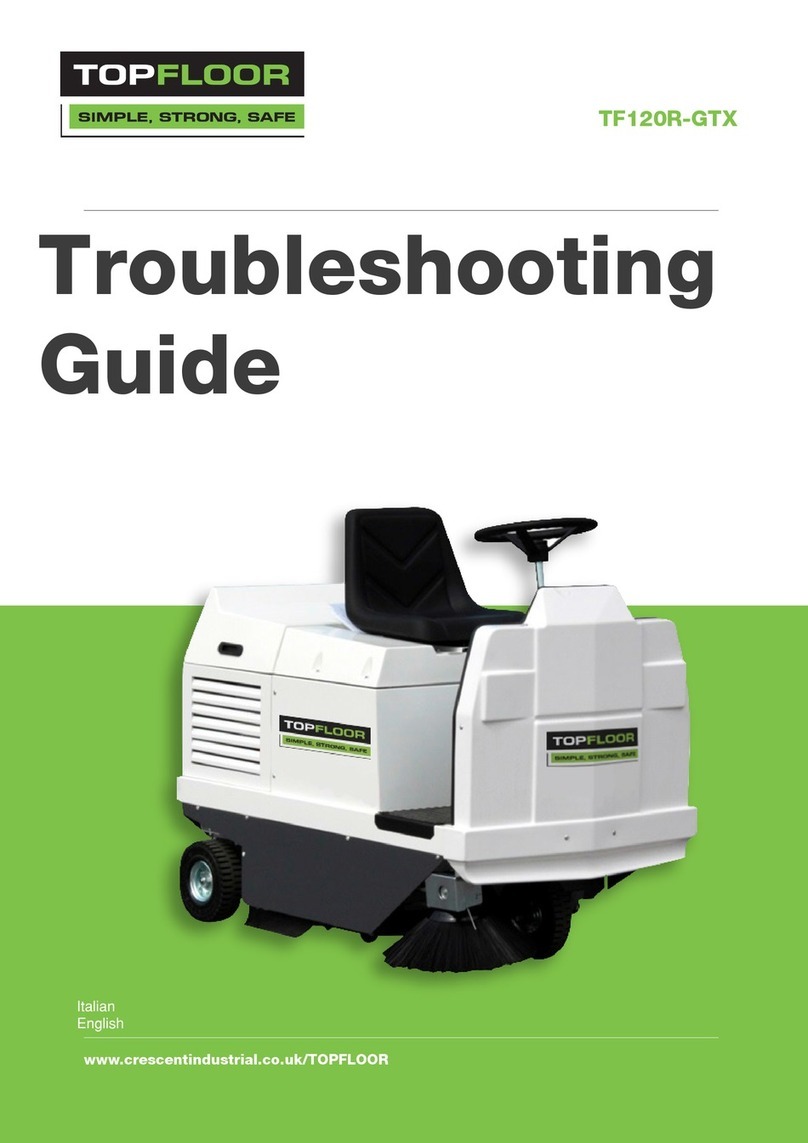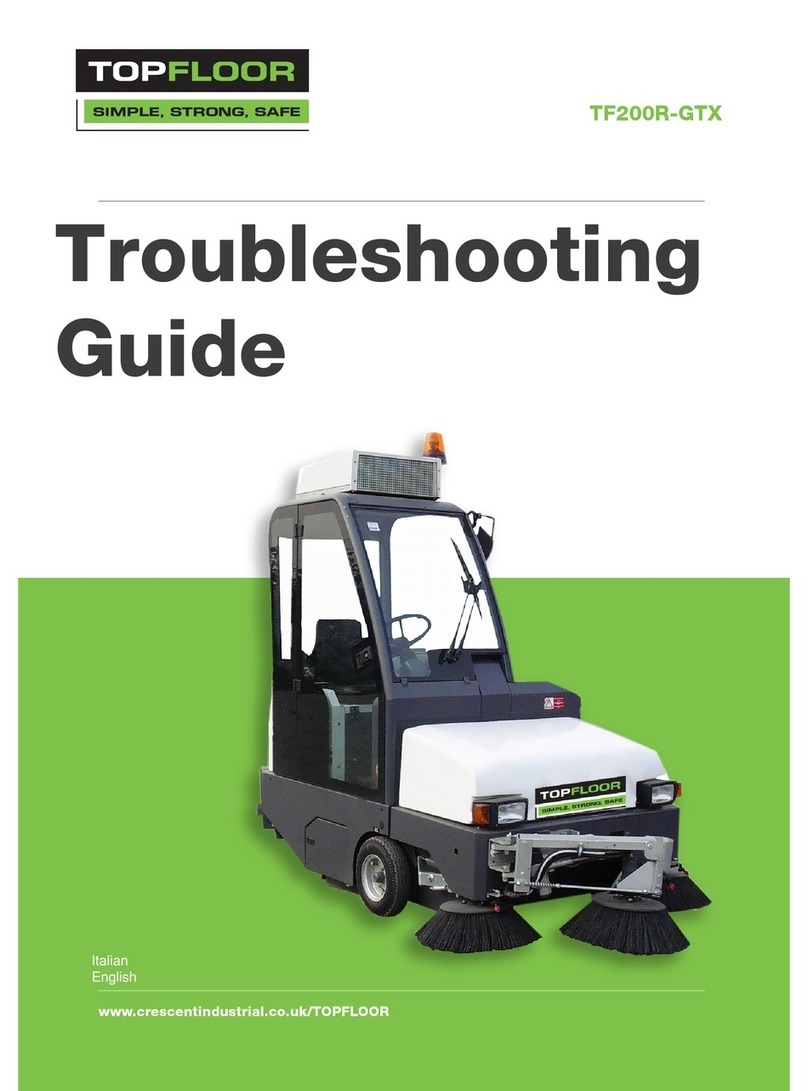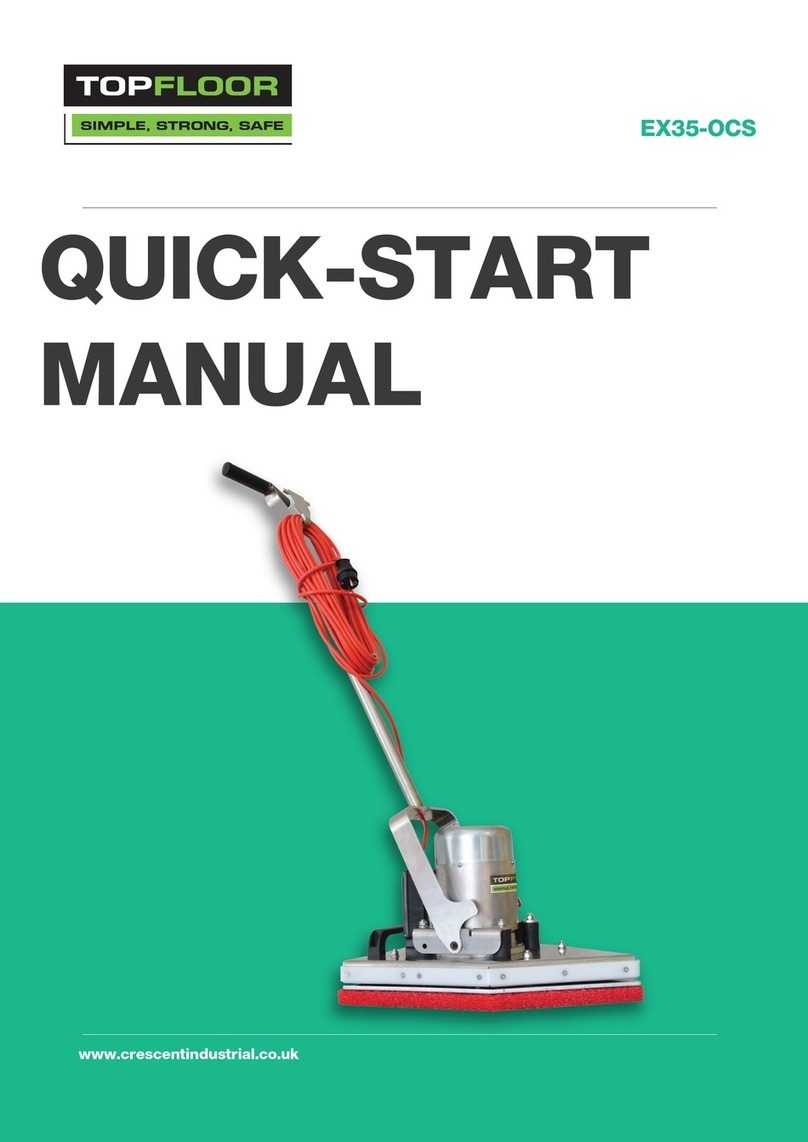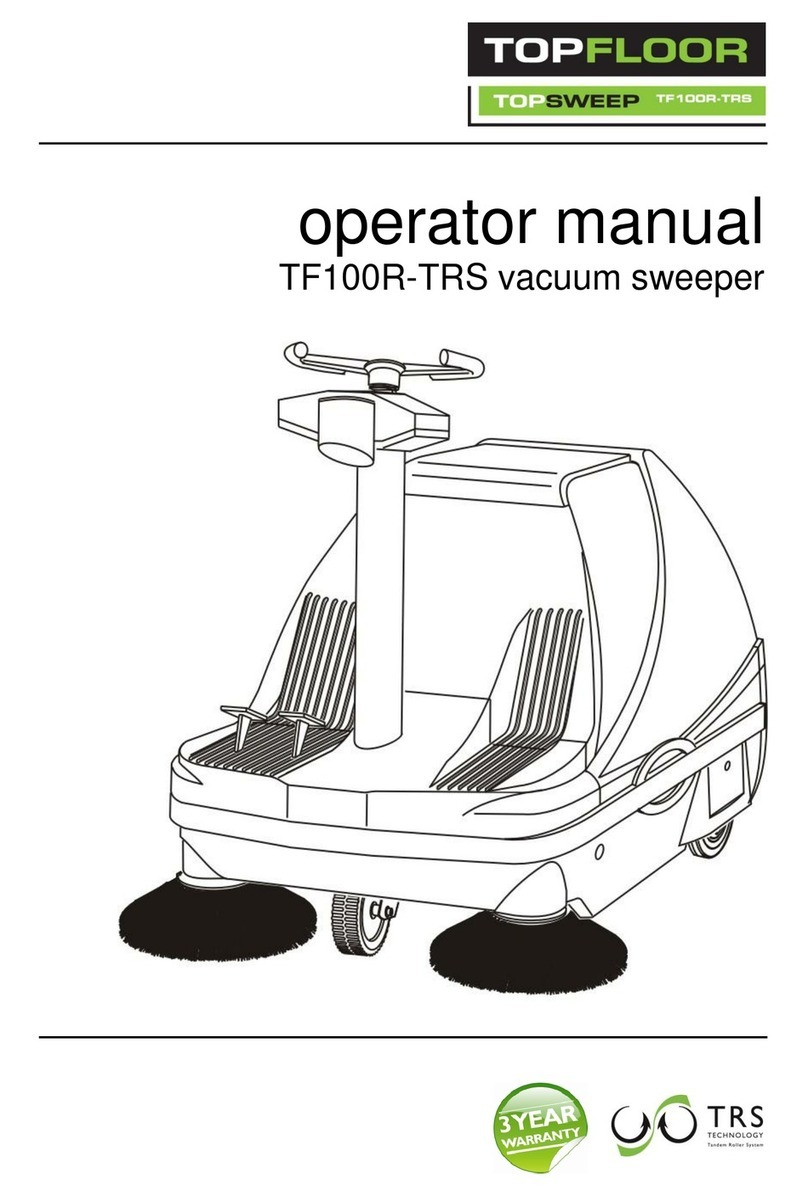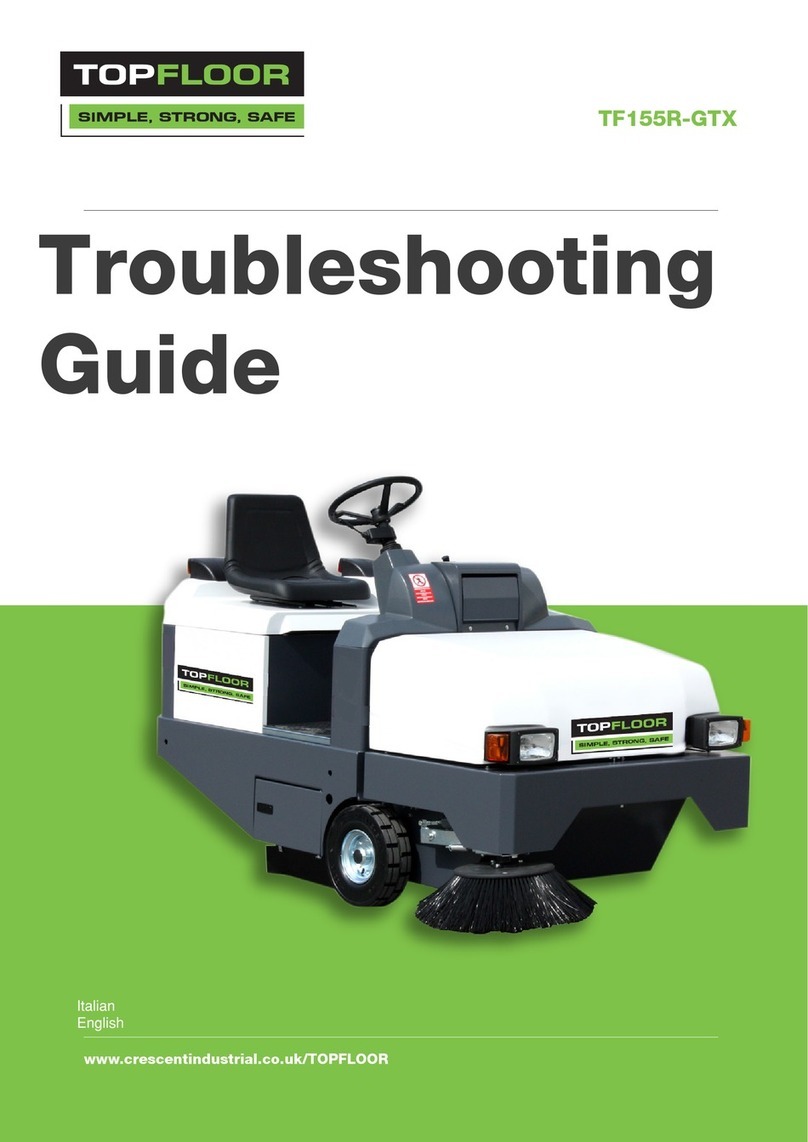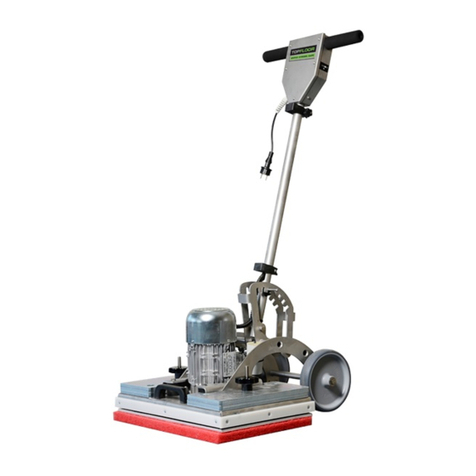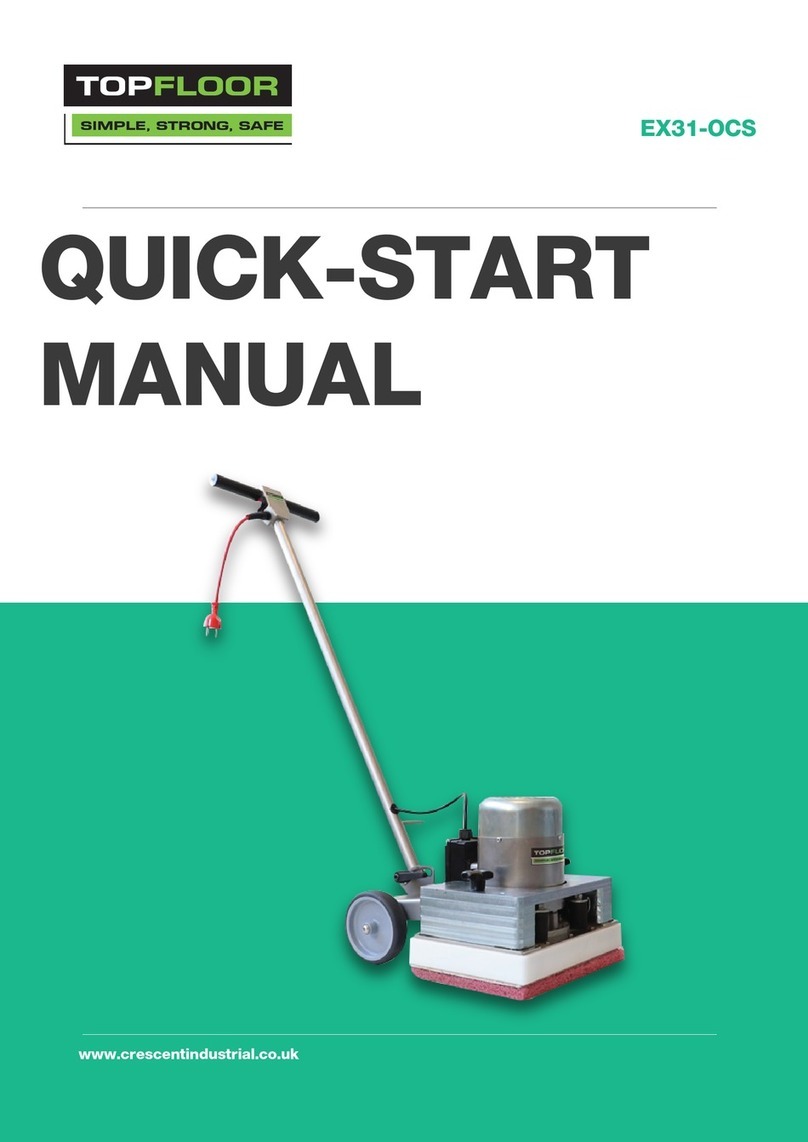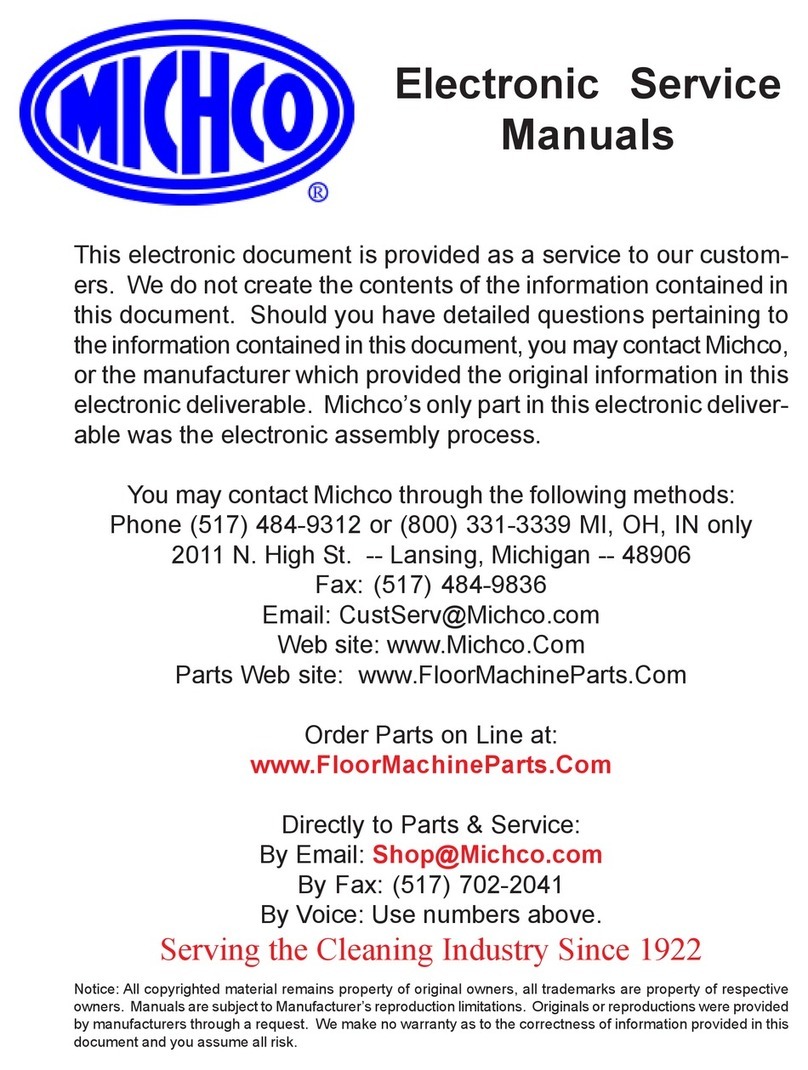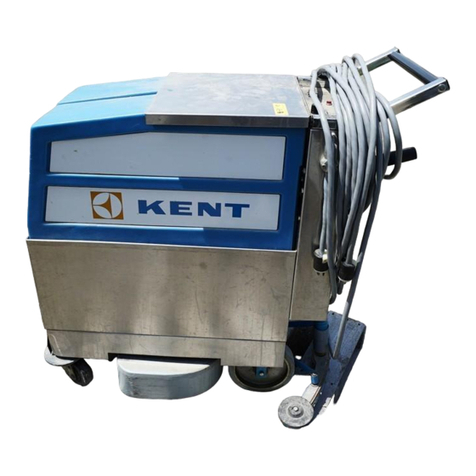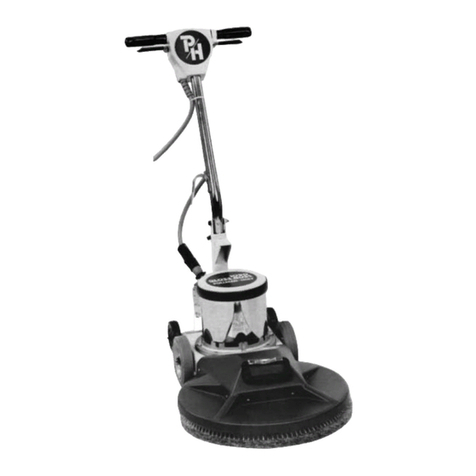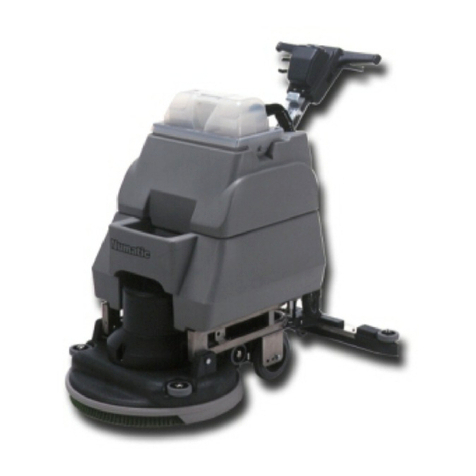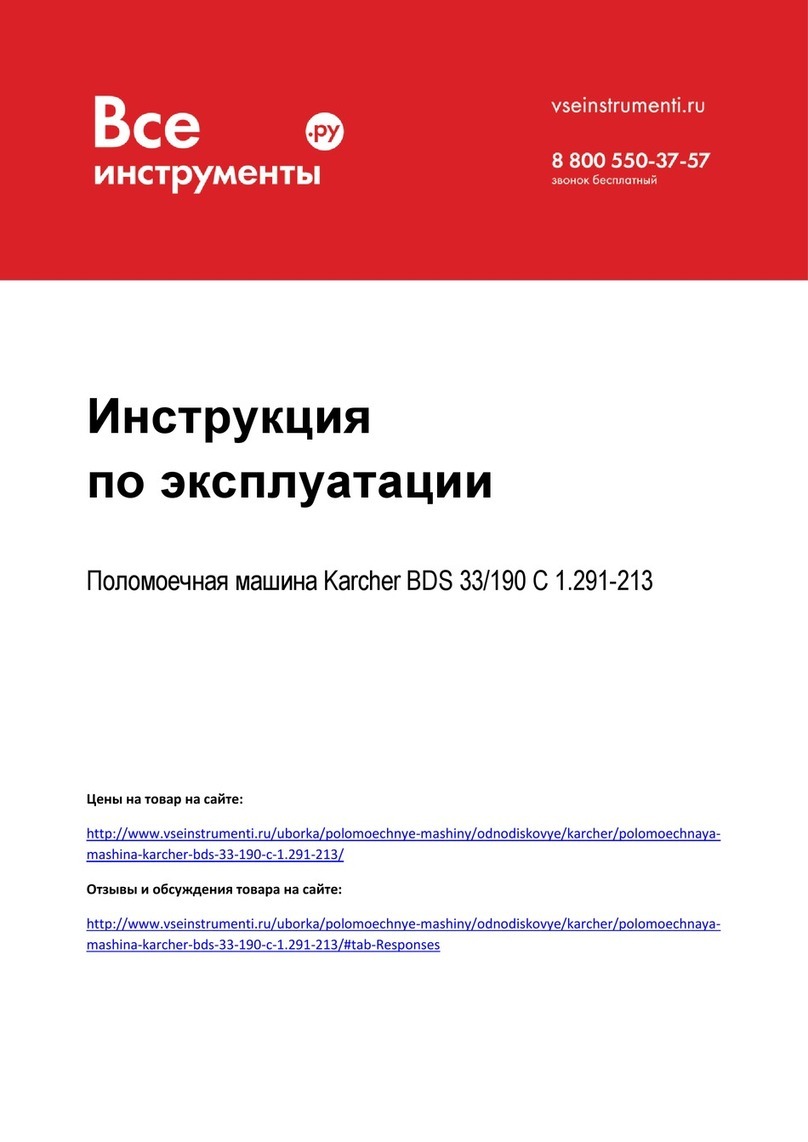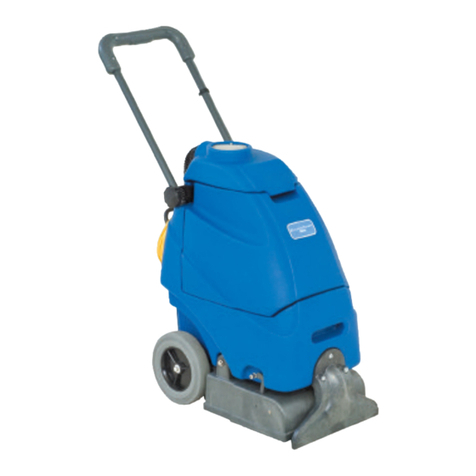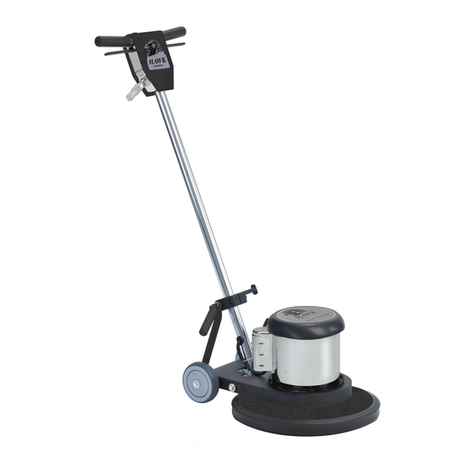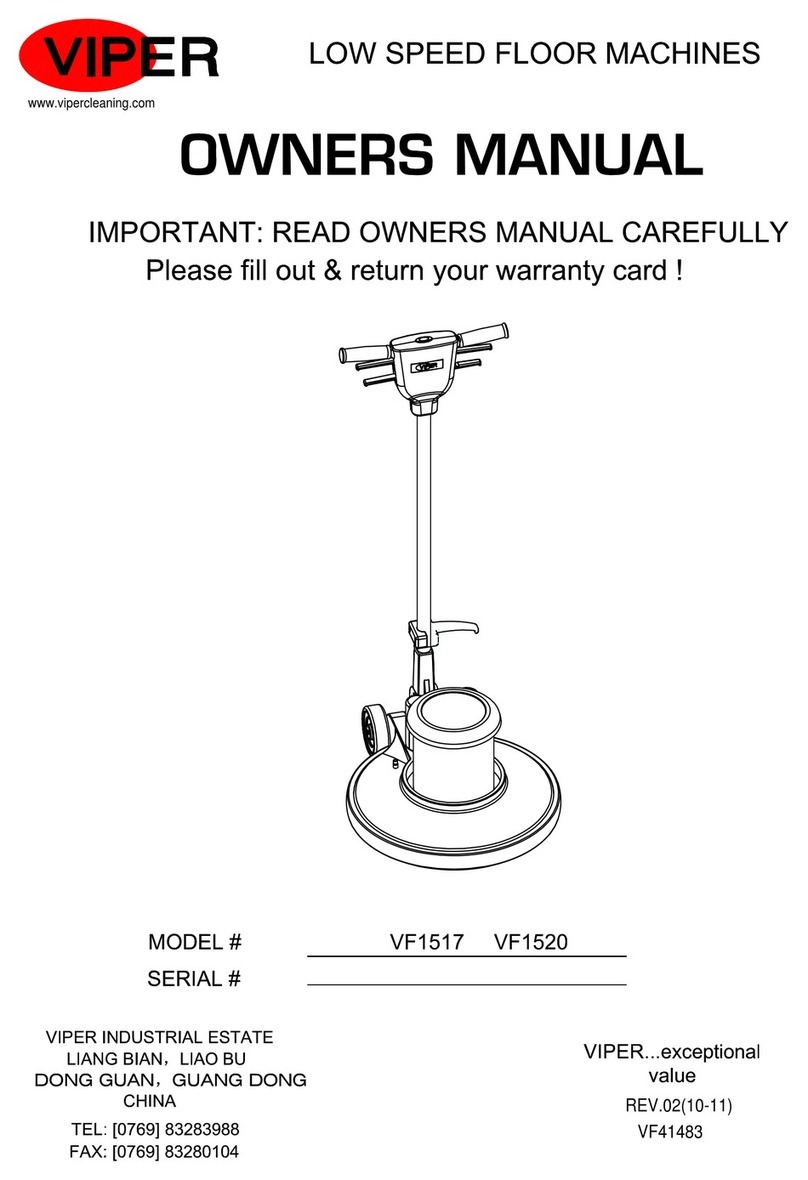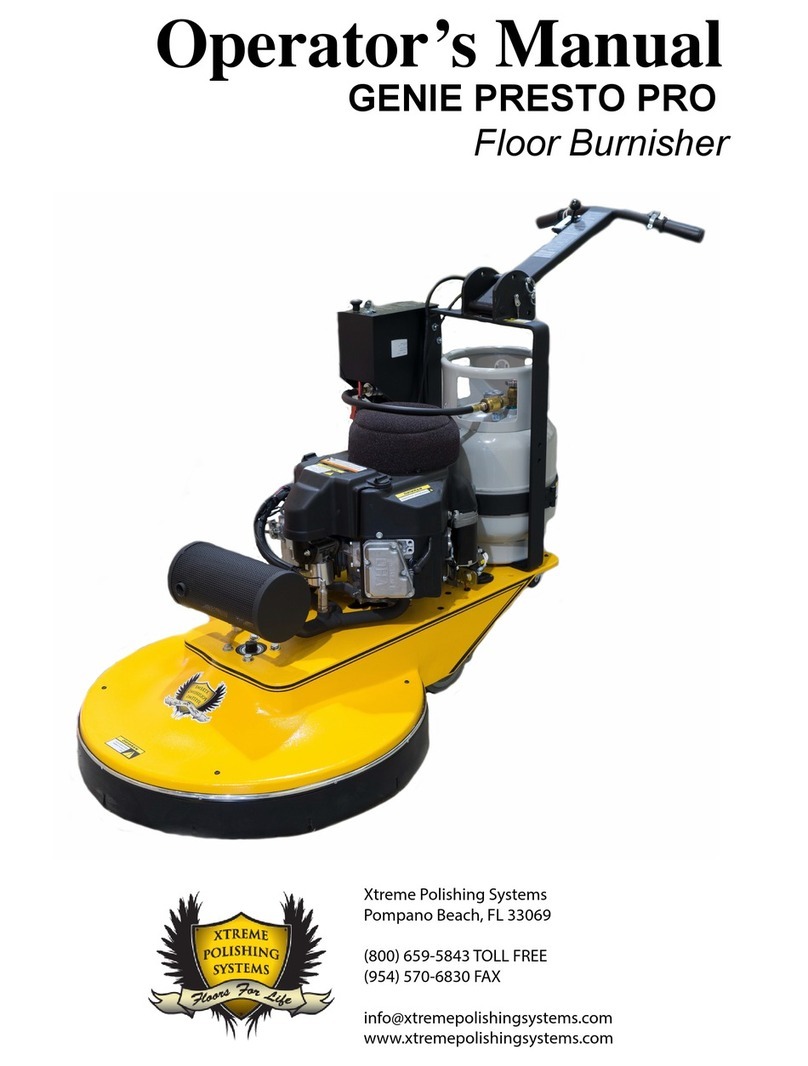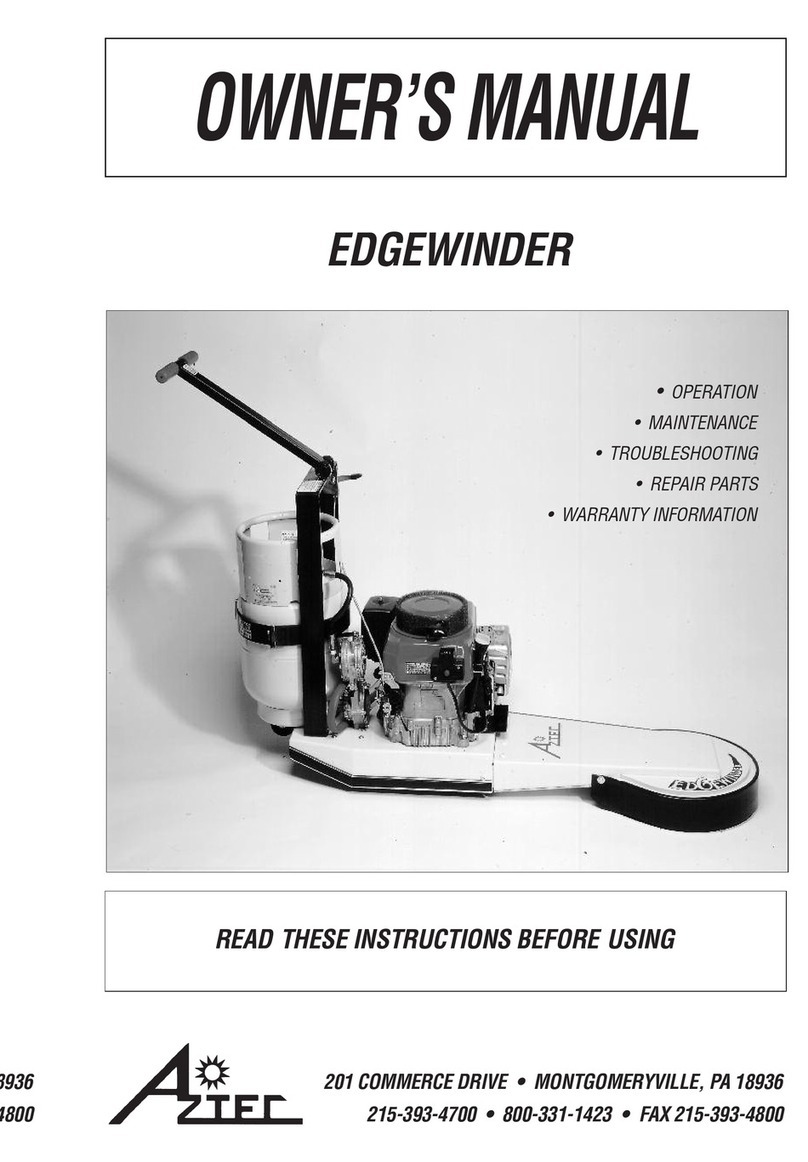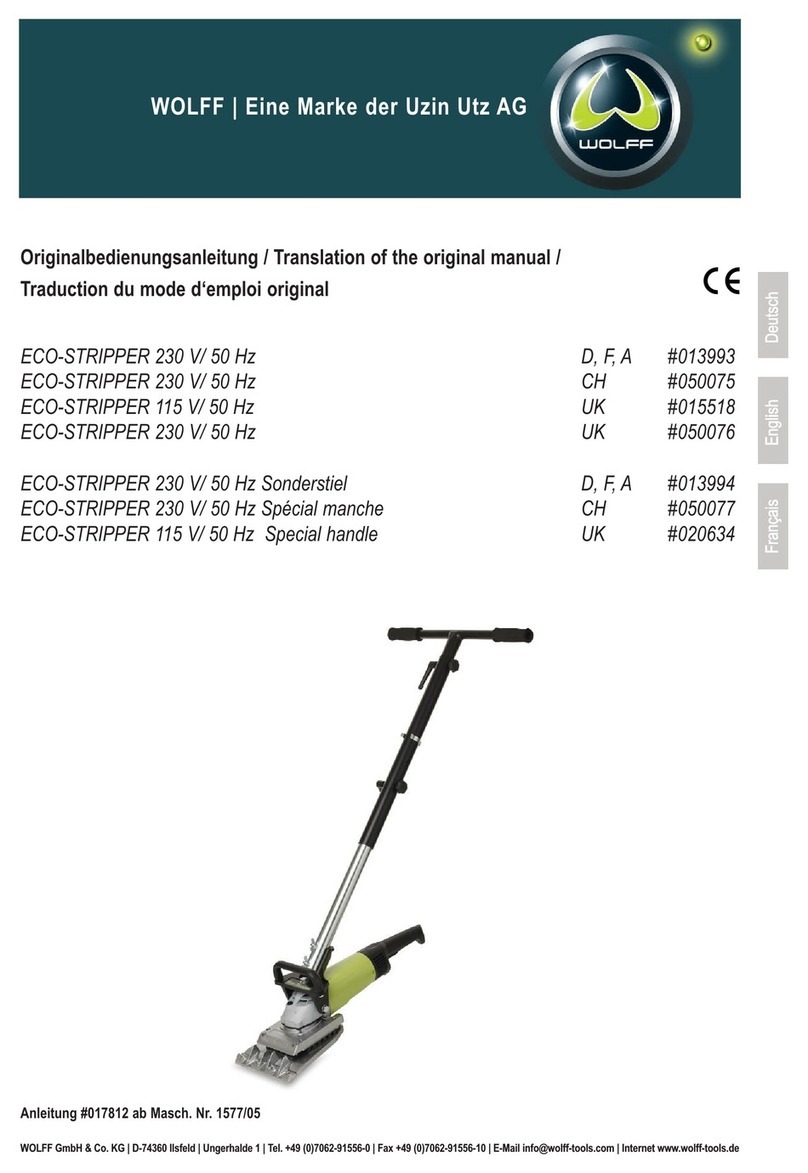
9
TOPSWEEP TF95-TRS
3 SAFETY
As well as the operating manual and the binding regulations for accident preven-
tion applicable in the country of usage and at the place where it is deployed,
recognised rules for safety and expert working, and environmental protection, are
also to be followed
3.1 SAFETY INSTRUCTIONS
Safety Instructions for Operation
• The machine is to be inspected before usage for its perfect condition and operational
safety. If it is not in perfect condition, it must not be used.
• In particular, have any errors that may affect safety rectified immediately.
• Operating the machine in buildings at risk of explosion is prohibited.
• Sweeping up of flammable, toxic or explosive materials and combustible gases or
undiluted acids and solvents, burning or smouldering objects is prohibited.
• The device is not suitable for accepting fluids, ropes, twines,wires or similar items.
• Only use the machine with the dirt-hopper inserted to prevent injuries due to parts being
projected.
• Do not make any alterations or additions to the machine without the approval of the
manufacturer.
• Persons (including children) who, due to their physical, sensory or mental capacities or
their inexperience or lack of knowledge, are not capable of using the machine safely
must not use this machine without the supervision or instruction of a responsible
person. Children must be supervised to ensure that they do not play with the machine.
• Caution: Loose items of clothing may be drawn into rotating parts and cause serious or
fatal injuries.
• Transporting loads with the sweeper is not permitted.
• Observe the maximum climbing ability specified in the technical data and maximum
possible slope inclination for operating across slopes. The equipment may tip,
particularly on slopes. Adapt your operating manner and speed to the conditions.
• The machine is not permitted for use on roads.
• Suitable, non-slip footwear is to be worn to avoid accidents.
Safety Instructions for Operation
• The operating instructions of the battery manufacturer for their product and the
specifications of the legislator on handling batteries are to be followed.
• Charge flat batteries directly after usage and only keep in well-ventilated rooms.
• Keep away from naked flames and electrical sparks in the charging area, as a
highly-explosive gas mixture can be produced when charging batteries.
• Note that the batteries may be filled with battery acid.
• Always keep batteries clean and dry to avoid leakage currents. Never short circuit the
battery terminals.




















